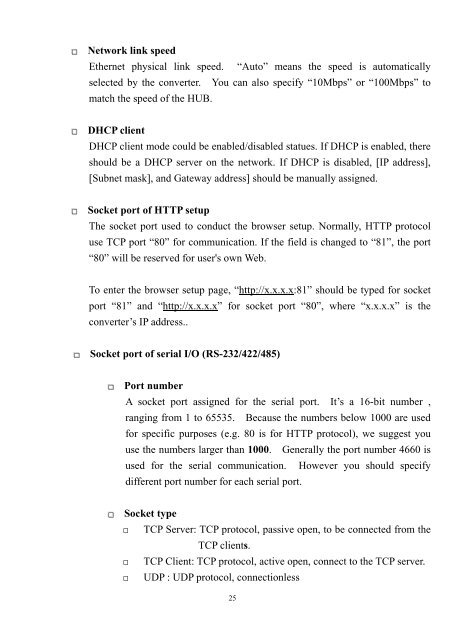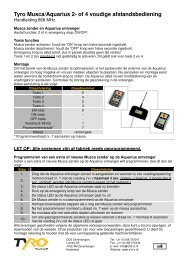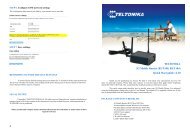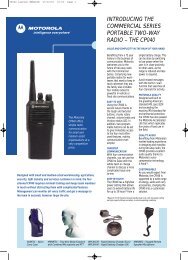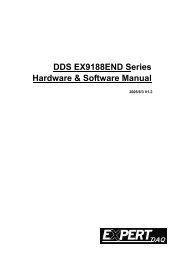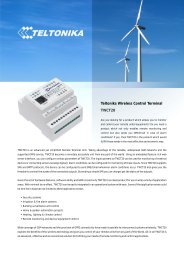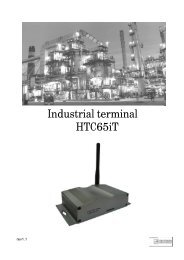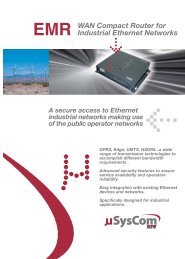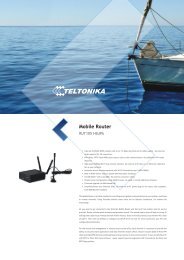TCP/IP Converter DDS EX-9132 Operation Manual for 8051 Series
TCP/IP Converter DDS EX-9132 Operation Manual for 8051 Series
TCP/IP Converter DDS EX-9132 Operation Manual for 8051 Series
Create successful ePaper yourself
Turn your PDF publications into a flip-book with our unique Google optimized e-Paper software.
□<br />
Network link speed<br />
Ethernet physical link speed. “Auto” means the speed is automatically<br />
selected by the converter. You can also specify “10Mbps” or “100Mbps” to<br />
match the speed of the HUB.<br />
□<br />
DHCP client<br />
DHCP client mode could be enabled/disabled statues. If DHCP is enabled, there<br />
should be a DHCP server on the network. If DHCP is disabled, [<strong>IP</strong> address],<br />
[Subnet mask], and Gateway address] should be manually assigned.<br />
□<br />
Socket port of HTTP setup<br />
The socket port used to conduct the browser setup. Normally, HTTP protocol<br />
use <strong>TCP</strong> port “80” <strong>for</strong> communication. If the field is changed to “81”, the port<br />
“80” will be reserved <strong>for</strong> user's own Web.<br />
To enter the browser setup page, “http://x.x.x.x:81” should be typed <strong>for</strong> socket<br />
port “81” and “http://x.x.x.x” <strong>for</strong> socket port “80”, where “x.x.x.x” is the<br />
converter’s <strong>IP</strong> address..<br />
□<br />
Socket port of serial I/O (RS-232/422/485)<br />
□<br />
Port number<br />
A socket port assigned <strong>for</strong> the serial port. It’s a 16-bit number ,<br />
ranging from 1 to 65535. Because the numbers below 1000 are used<br />
<strong>for</strong> specific purposes (e.g. 80 is <strong>for</strong> HTTP protocol), we suggest you<br />
use the numbers larger than 1000. Generally the port number 4660 is<br />
used <strong>for</strong> the serial communication. However you should specify<br />
different port number <strong>for</strong> each serial port.<br />
□<br />
Socket type<br />
<br />
<br />
<br />
<strong>TCP</strong> Server: <strong>TCP</strong> protocol, passive open, to be connected from the<br />
<strong>TCP</strong> clients.<br />
<strong>TCP</strong> Client: <strong>TCP</strong> protocol, active open, connect to the <strong>TCP</strong> server.<br />
UDP : UDP protocol, connectionless<br />
25


